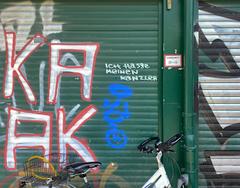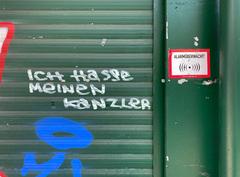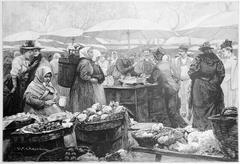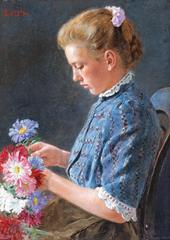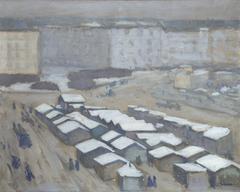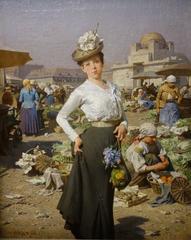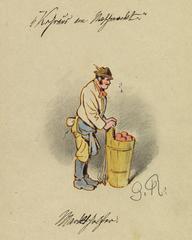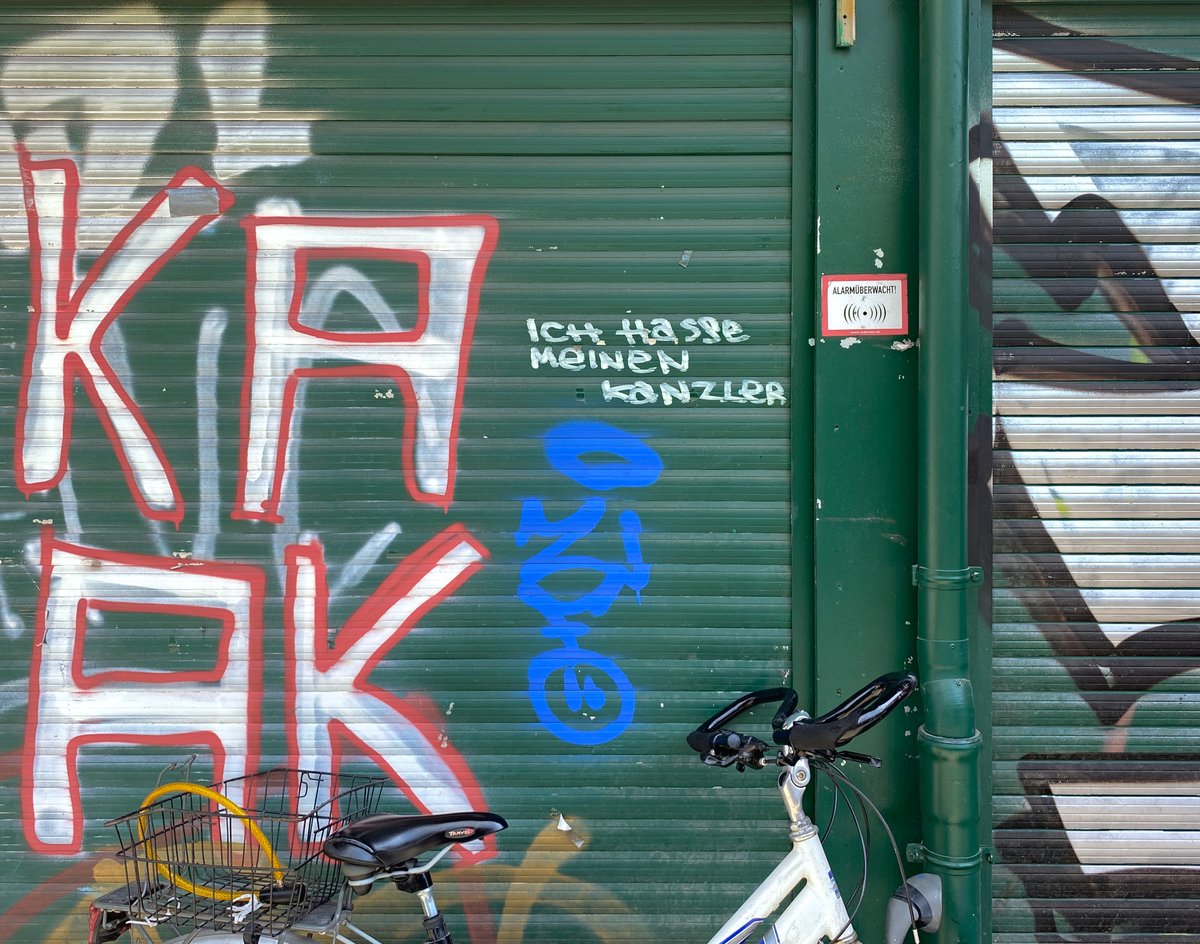
Naschmarkt Vienna: Visiting Hours, Tickets, and Essential Guide
Date: 14/06/2025
Introduction: The Heart of Vienna’s Urban Life
Nestled in Vienna’s vibrant core, the Naschmarkt is not merely a market—it is a living, breathing symbol of Vienna’s historical evolution, multiculturalism, and gastronomic excellence. Originating in the late 18th century as the “Aschenmarkt” (Ash Market), it has transformed from a humble trading spot for fruit, vegetables, and milk into a bustling urban institution that showcases the city’s cosmopolitan flair (timetravel-vienna.at; vienna.net). Today, Naschmarkt spans 2.3 hectares along the Wienzeile and features about 170 stalls and restaurants, offering a rich spectrum of local and international foods, artisanal products, and antiques (wien.gv.at; naschmarkt-vienna.com).
With its free entry, convenient opening hours, and easy access via the U4 underground line, Naschmarkt is an essential destination for foodies, culture seekers, and history enthusiasts alike (wien.info; rudigourmand.com). This guide unpacks everything you need to know for a fulfilling visit, from history and cultural highlights to practical travel tips and accessibility information.
Historical Overview
From Aschenmarkt to Naschmarkt
The market’s story began in the late 1700s, when it was relocated from Freyung Square to its current district due to a dispute between city officials and the Schottenkloster monastery (timetravel-vienna.at). Initially called the “Aschenmarkt” because of its previous use as an ash and manure depot, the name “Naschmarkt”—a playful nod to the German “naschen” (to snack)—reflected its growing reputation as a culinary hotspot (wien.gv.at).
Evolution and Urban Significance
By the early 20th century, following the regulation and covering of the River Wien, the market expanded along the new Wienzeile boulevard—an urban vision led by architect Otto Wagner (wien.gv.at). Iconic wooden Biedermeier-style sales halls and Art Nouveau pavilions, designed by Wagner and Friedrich Jäckel, remain hallmarks of the market’s architectural character (traveltoaustria.info). The Naschmarkt soon became Vienna’s main fresh food market, reflecting and shaping the city’s social and gastronomic life.
Social and Cultural Fabric
From its earliest days, the Naschmarkt was animated by colorful market women—Fratschlerinnen, Höcklerinnen, and Bolettenweiber—whose lively presence became legendary (timetravel-vienna.at). The market grew into a melting pot, where Viennese traditions mingled with exotic imports, mirroring Vienna’s multicultural identity (secretvienna.org; viennatouristinformation.com).
Market Layout and Vendor Offerings
Structure and Navigation
Extending over a kilometer between Karlsplatz and Kettenbrückengasse, Naschmarkt is organized into three main rows:
- Central Row: Lined with restaurants, cafés, and bars serving everything from Viennese classics to global fare (wien.info).
- Flanking Rows: Home to stalls selling fresh produce, meats, cheeses, baked goods, specialty foods, and artisanal products (naschmarkt-vienna.com).
Vendor Diversity
With over 120–170 vendors, Naschmarkt offers:
- Fresh Produce: Seasonal fruits, vegetables, and organic options.
- Meat & Fish: Traditional Austrian butchers alongside Mediterranean and Middle Eastern specialties.
- Cheese & Dairy: Variety ranging from Austrian Bergkäse to Balkan and French cheeses.
- Bakery & Sweets: Viennese pastries, Turkish delights, and handmade chocolates.
- Spices & Oils: Exotic spices, regional oils (pumpkin seed, walnut), and specialty vinegars.
- Delicatessen: Olives, antipasti, cured meats, and pickled goods.
- International Cuisine: Turkish kebabs, Greek baklava, Asian snacks, Italian antipasti, and more.
Dining Options
- Sit-down Restaurants: Full-service meals spanning Austrian, Mediterranean, Asian, and Middle Eastern cuisines.
- Casual Eateries: Quick bites—sandwiches, wraps, and street food.
- Cafés & Wine Bars: Perfect for coffee, Austrian wine, and people-watching.
Visiting Information
Opening Hours
- Market Stalls:
- Monday–Friday: 6:00 AM – 7:30 PM
- Saturday: 6:00 AM – 6:00 PM
- Closed Sundays and public holidays
- Restaurants and Cafés:
- Typically open Monday–Saturday from 6:00 AM – 11:00 PM (rudigourmand.com)
Entry and Tickets
- Entry: Free; no tickets required for the market or flea market.
Getting There
- U-Bahn: U4 line to Kettenbrückengasse (west end) or Karlsplatz (east end).
- Tram and Bus: Several lines nearby; U-Bahn is most convenient.
- Walking: Close to Vienna’s city center and major sites (AustriaVienna.info).
Accessibility
- The market is mostly flat and paved, suitable for wheelchairs and strollers. Some older pavilions may have tighter spaces, but main aisles are accessible.
Payment and Currency
- Currency: Euro (€)
- Credit Cards: Widely accepted, especially in restaurants; cash is recommended for smaller purchases and flea market shopping.
- ATMs: Available near entrances and along the Wienzeile (rudigourmand.com).
Cultural Highlights and Events
The Saturday Flea Market
Each Saturday, the western end near Kettenbrückengasse hosts Vienna’s largest flea market—an institution for antique lovers, vintage hunters, and the curious (secretvienna.org). Here you’ll find everything from books and vinyl to porcelain and quirky collectibles.
Festivals and Events
Naschmarkt regularly features food festivals, organic produce events, and live music. Check the official Vienna tourism portal for current happenings (naschmarkt-wien.at).
Guided Tours
Several companies offer guided walking tours that delve into the market’s history, architecture, and culinary treasures. These are ideal for first-time visitors or those seeking a deeper perspective.
Practical Tips for Visitors
-
Best Times:
- Weekday mornings are less crowded and ideal for browsing.
- Saturdays are lively, especially during the flea market, but can be crowded.
-
Facilities:
- Public toilets available (small fee may apply).
- Seating at many cafés and restaurants.
- Some eateries offer free Wi-Fi.
-
Language:
- German is primary; English is widely spoken.
-
Children and Pets:
- Family-friendly atmosphere; pets allowed on leashes.
-
Sustainability:
- Bring your own shopping bag to reduce waste.
-
Tipping:
- In restaurants, round up or tip 5–10%.
Nearby Attractions
- Secession Building: Art Nouveau landmark, a short stroll away.
- Vienna State Opera: A few minutes’ walk from the market’s east end.
- Karlsplatz and MuseumsQuartier: Ideal for a cultural itinerary.
Frequently Asked Questions (FAQ)
Q: Is Naschmarkt free to enter?
A: Yes, entry is free for both the market and flea market.
Q: What are the opening hours?
A: Monday–Friday: 6:00 AM – 7:30 PM; Saturday: 6:00 AM – 6:00 PM; closed Sundays.
Q: Is Naschmarkt wheelchair accessible?
A: Yes, most main paths are accessible.
Q: Are guided tours available?
A: Yes, several operators offer guided walking and culinary tours.
Q: Is it safe?
A: Very safe, but as with any busy market, be mindful of pickpockets.
Conclusion: Experience Vienna’s Iconic Marketplace
The Naschmarkt is more than a place to shop or dine—it is where Vienna’s history, culture, and communities intersect. Its rich tapestry of flavors, vibrant architecture, and welcoming spirit make it a must-visit destination for anyone in Vienna. Whether you come for a leisurely breakfast, a culinary adventure, or to hunt for antiques at the flea market, your visit promises a memorable insight into Viennese life.
For more tips, audio guides, and insider recommendations, download the Audiala app and follow our social media for the latest updates on Vienna’s top attractions.
Sources
- timetravel-vienna.at
- vienna.net
- wien.info
- AustriaVienna.info
- secretvienna.org
- traveltoaustria.info
- viennatouristinformation.com
- rudigourmand.com
